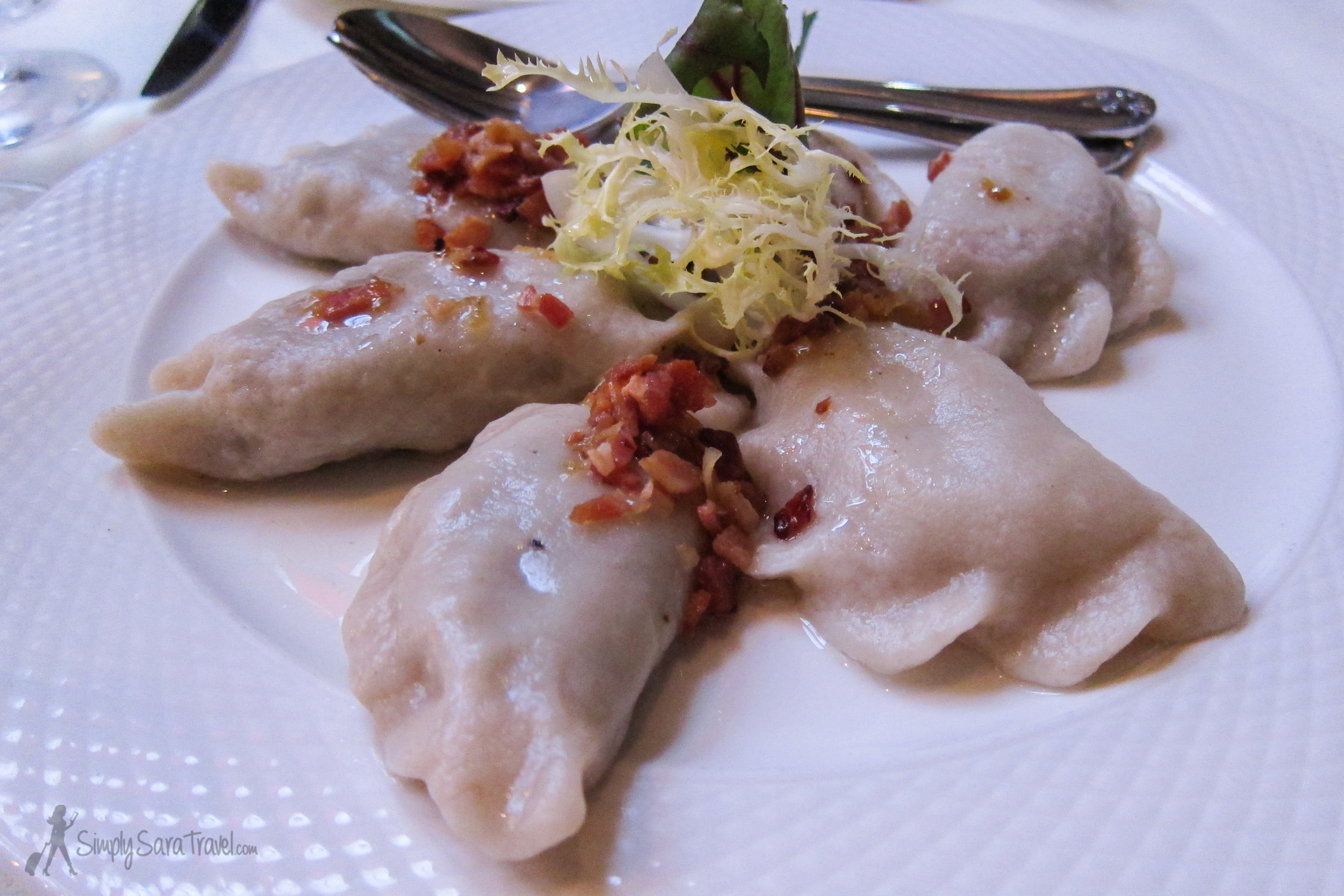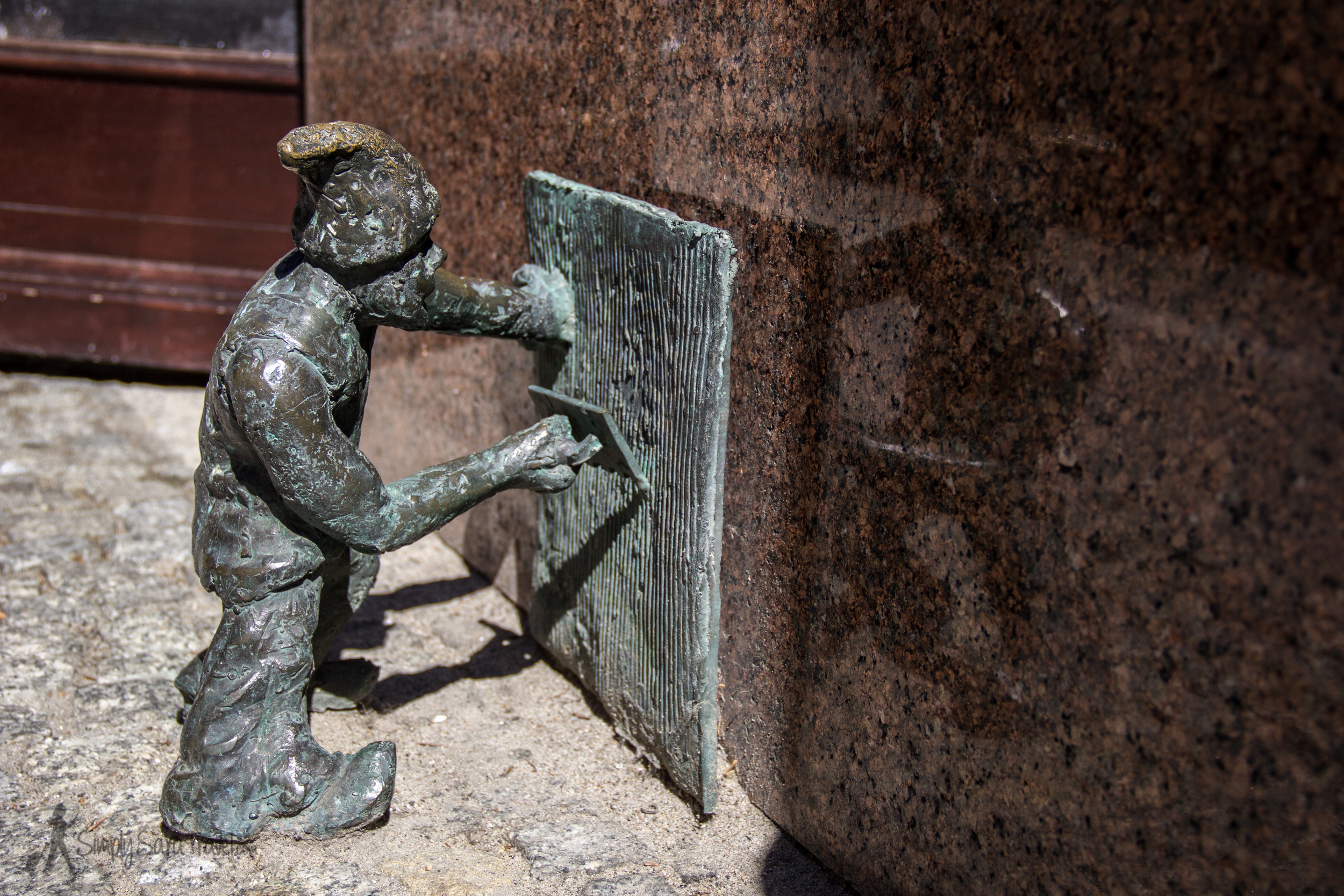I have to apologize. I’ve done a bait-and-switch of sorts. Here I was last week, giving a teaser of our time in Gdańsk, and the only thing I’ve revealed so far is one of the side-trips we took from Gdańsk to the beach town of Sopot. The Jersey Shore parallels excited me, what can I say? (If you missed it, read more in my post on how Sopot is the Atlantic City of the East.)
My apology is going to seem a bit empty in a moment though, because instead of getting to Gdańsk, I’m again going to divert over to our other day trip we took while in the area: to Malbork Castle. The truth is that as I try to grasp all we did in Gdansk, there are so many elements and facets to this city that I want to share, and it is overwhelming! But I will get to it soon, I really will.
Today though, it’s all about Malbork Castle. It is easily accessible from Gdańsk - it’s about 30-minutes via train, and then a 15-minute walk to the castle from the station. There’s definitely no way you can miss finding this when you get to town:
The approach to Malbork Castle - no matter from what angle I stood, it was impossible to capture a photo that really encapsulated just what type of magnitude of size we're talking about when it comes to the ginormous Malbork Castle.
Just one little section of the castle!
Try as I did, I couldn’t get one photo to fully capture the immensity of this castle. It’s the largest brick castle in the world, the largest brick building in Europe, and by surface area, the largest castle in the world. Trust me, it’s big.
If you remember the ruins I showed you in Toruń, this is another castle built by the Teutonic Knights (and clearly in much better condition). Who were these knights to have such a huge fortress? This order of German monks and knights formed to take care of the injured who fought in the crusades. The crusades ended in the 12th century and a new job opportunity developed for them. They were sent over to Poland to do some pagan-converting of their own (ie. using the sword to convert). They settled into their home base of Malbork Castle in northern Poland and the money started rolling in. This Germanic order had control of the Baltic Sea, which meant lots of power and money thanks to this strategic trading post. This huge castle stands as a testimony to the sweet medieval mansion they enjoyed.
Fast forward to the mid-1400’s. The Teutonic Knights finally lost control of their northern Poland niche. The castle has flip-flopped between Polish and German control over the centuries, and was used by the Nazis during WWII to house POW’s. About half of the castle was destroyed by the Soviets during the war. Much has been rebuilt and restored since then, but you can still see some of the damage wrought onto the castle during WWII.
One thing that I appreciate about a visit to Malbork Castle is that there seems to be something for everyone. Being a fortress, it was used defensively. If you’re interested in that aspect, there is plenty to see including an entire armory section. If you’re more like me and prefer “pretty” over “practical,” there’s the delicate Grand Master’s Palace, a reminder that this castle was used as a royal residence. (Both Polish and German royalty have spent time here.)
Inside the Grand Refectory of Malbork Castle, designed to hold banquets for up to 400 guests.
My favorite part of the castle to explore was the innermost section, the High Castle. This was the monastery of the Teutonic Order, and here you can see the dormitories, chapels, refectory, kitchen, and St. Mary’s Church.
This (and the photo below) are details of the Golden Gate, which is at the entrance of St. Mary's Church, and dates to the late 13th century. Here are three (of the five) wise virgins with their lamps filled of oil (see Matthew 25:1-13 in the Bible).
Three (of the five) foolish virgins who had no oil for their lamps when they needed it...
St. Mary's Church was badly damaged during WWII. It sat for decades with no roof, and now is under a slow-going restoration project. Walking around felt like discovering a long-forgotten church. This of course in its heyday was the heart of Malbork Castle, with lots of monks worshipping here daily. It’s fun to imagine the grandeur that this church must have displayed at one time...
Inside St. Mary's Church - this is part of the castle that was destroyed during WWII and is slowly being restored.
The High Castle was the last section we visited. Afterwards, we walked around a bit more and tried to get one more view of the castle before setting back to the train station.
We walked across the bridge to try to get the recommended view across the Nogat River (written about in Rick Steves' guidebook of course). The construction in front of the castle detracted a bit but I can see what he was going for!
Do you enjoy visiting castles? This, along with Warsaw's Royal Castle, ranked in one of my most memorable experiences in Poland!
PLAN YOUR VISIT:
Malbork Castle
Starościńska 1, 82-200 Malbork, Poland
Closed on Mondays and certain holidays (see website)
Open Tuesday-Sunday; Summer Season (May 1-Sept 30 from 9am-7pm / Winter Season (Oct 1-April 30 from 10am-3pm)
Admission: Regular price during summer season - 39.50 pln, Regular price during winter season - 29.50 pln (prices as of February 2015)
Getting there: You can go to the DB Bahn website to look up the train schedule between Gdańsk and Malbork. There is a direct train route that is just under half an hour in duration (one way). You can also get to Malbork Castle from Warsaw, though a direct train ride takes just under 2.5 hours (one way).
We left Gdańsk at little after 8am and were back in town by 2pm. Definitely set aside the better part of the day to allow to get there and back, plus some hours to tackle this mammoth of a fortress.



















